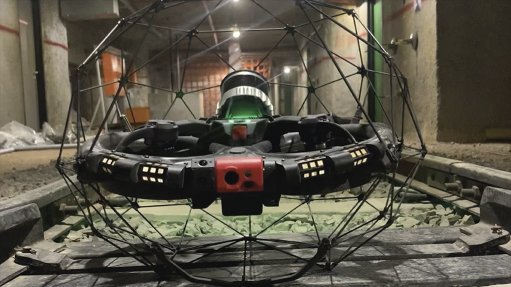
Gammatec NDT Supplies launched the Flyability ELIOS 3 drone
Gammatec NDT Supplies recently showcased the new Flyability ELIOS 3 internal and confined space inspection drone. The launch was held at the University of Johannesburg (UJ) and was hosted by the Department of Mining Engineering and Mine Surveying under the UJ Faculty of Engineering and the Built Environment.
The drone’s stability, robustness and mapping capabilities were demonstrated in the university’s mock-up mining tunnel, designed to simulate real mine conditions. The facility was built with the support of Sibanye-Stillwater, in order to expose new students to an authentic mining environment and was considered the ideal space to showcase the stability, robustness and mapping capabilities of the Flyability ELIOS 3.
Said to be the world’s first collision-tolerant drone, the ELIOS 3 is equipped with a light detection and ranging (LiDAR) sensor for indoor three-dimensional (3D) mapping and created to address the need for reliable inspection tools and easy-to-use, reliable technology that remains stable when working inside highly sensitive assets.
The drone is powered by a new SLAM engine called FlyAware, which allows it to create 3D models as it flies and includes Inspector 4.0, a new software version for inspectors, enabling mapping of areas that are out of reach or too dangerous for humans but critical to support operational decisions in many industries.
Flyability notes that combining the best of confined space drone data capture and 3D geospatial software technology, through its partnership with GeoSLAM, enables professionals to produce survey-grade point clouds of the most inaccessible places in a workplace, eliminating the risks of approximations and guesswork. In addition to carrying a LiDAR sensor, the ELIOS 3 can accommodate a second payload that allows it to be customized to an individual user’s needs.
In addition, FlyAware is said to give the ELIOS 3 ground-breaking stability, combining data from the drone’s three optical cameras and its LiDAR sensor to catch the tiniest unpredictable movement and instruct the flight controller to compensate accordingly. This stability and other ease-of-use features aim to ensure that the drone is easy to operate, allowing new pilots to be trained and to perform inspections on the same day.